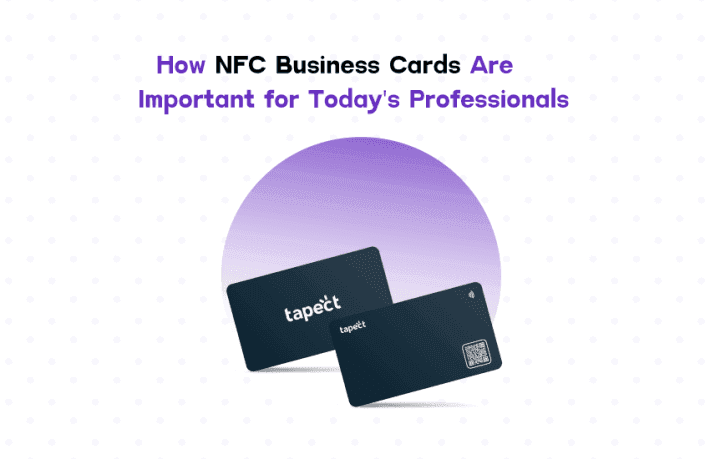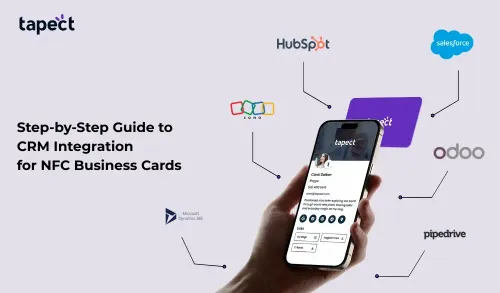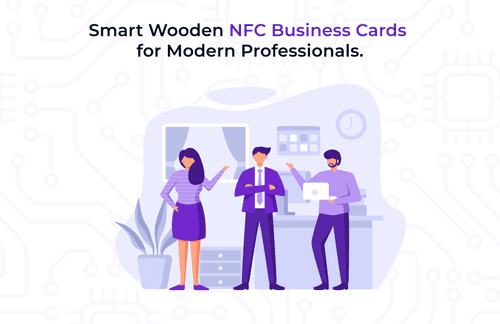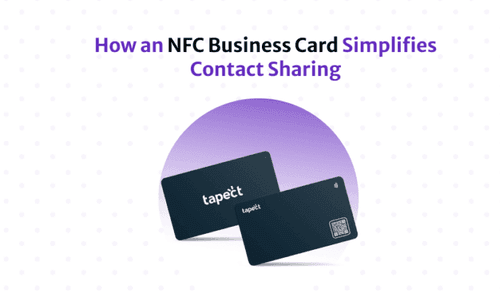In the digital age, networking and making connections have become more crucial than ever for professionals across all industries. The way we share our contact information has evolved from traditional paper business cards to innovative digital solutions. One of the most transformative advancements in this domain is the NFC (Near Field Communication) business card. This technology offers a range of benefits that make it an essential tool for modern professionals. Here’s why NFC business cards are indispensable in today’s fast-paced, tech-savvy world.
Instant and Contactless Information Sharing
One of the most significant advantages of NFC business cards is their ability to share information instantly and contactless. With a simple tap, an NFC-enabled smartphone can receive all the necessary contact details from the card. This seamless interaction eliminates the need for manual data entry, reducing the risk of errors and ensuring that the information is stored accurately. In a post-pandemic world where minimizing physical contact is often necessary, this feature adds an extra layer of convenience and safety.
Eco-Friendly and Sustainable
Conventional paper business cards produce trash and contribute to deforestation. In contrast, NFC business cards are a more sustainable option. They can be reused indefinitely, reducing the need for reprinting and cutting down on paper consumption. For environmentally-conscious professionals and organizations, NFC business cards represent a commitment to sustainability and a reduction in their carbon footprint. By opting for digital business cards, professionals can positively impact the environment while embracing modern technology.
Enhanced Customization and Interactivity
NFC business cards offer a level of customization and interactivity that traditional cards cannot match. These cards can be programmed to link to various digital assets, such as websites, social media profiles, portfolios, and more. This allows professionals to showcase their work, share multimedia content, and provide potential contacts with a richer, more engaging experience. The ability to update the information stored on the card without reprinting ensures that the details are always current and relevant.
Improved Professional Image
Using NFC business cards can significantly enhance a professional’s image. It demonstrates a forward-thinking attitude and a willingness to embrace new technologies. This can be particularly advantageous in industries where innovation and tech-savviness are valued. Presenting an NFC business card can leave a lasting impression on clients, partners, and potential employers, setting the professional apart from others who still rely on traditional methods.
Data Analytics and Insights
NFC business cards provide valuable data analytics and insights that traditional cards cannot offer. Professionals can track when and where their cards are being used, providing useful information about networking effectiveness. This data can help in refining networking strategies, identifying potential leads, and understanding which connections are most valuable. By leveraging these insights, professionals can optimize their efforts and improve their overall networking outcomes.
Enhanced Security and Privacy
NFC technology offers enhanced security features compared to traditional paper cards. The information on an NFC business card can be encrypted, ensuring that only authorized devices can access it. This reduces the risk of unauthorized data access and protects sensitive information. Additionally, because the data can be updated remotely, professionals can quickly change or revoke access if their card is lost or stolen, adding an extra layer of security.
Cost-Effective in the Long Run
While the initial cost of an NFC business card may be higher than that of a traditional paper card, the long-term savings are substantial. Since the card can be updated digitally, there is no need for reprinting when contact details change. This can save money over time, especially for professionals who frequently update their information or those who need to distribute large numbers of cards. Additionally, the durability of NFC cards means they are less likely to be damaged or lost, further reducing replacement costs.
Integration with Digital Platforms
NFC business cards can seamlessly integrate with various digital platforms, enhancing their utility and effectiveness. For example, they can be linked to CRM systems, enabling automatic entry of contact information and facilitating better relationship management. They can also be used to trigger actions on smartphones, such as sending an email, making a call, or adding a contact to the address book. This level of integration streamlines networking processes and makes it easier for professionals to stay connected.
Future-Proof Networking Tool
As technology continues to evolve, so too will the ways in which we network and share information. NFC business cards are a future-proof solution that can adapt to new developments and trends. They represent a shift towards a more digital and connected world, ensuring that professionals who adopt them are well-prepared for future advancements. By embracing NFC technology now, professionals can stay ahead of the curve and maintain a competitive edge in their field.
Conclusion
NFC business cards are an essential tool for modern professionals. They offer a range of benefits, from instant and contactless information sharing to enhanced customization and sustainability. These cards improve professional image, provide valuable data insights, and offer enhanced security and privacy. While they may require an initial investment, the long-term cost savings and integration with digital platforms make them a worthwhile addition to any professional’s networking toolkit. As we move towards an increasingly digital and connected world, NFC business cards represent the future of professional networking. Embracing this technology can help professionals stay ahead, make meaningful connections, and leave a lasting impression.



